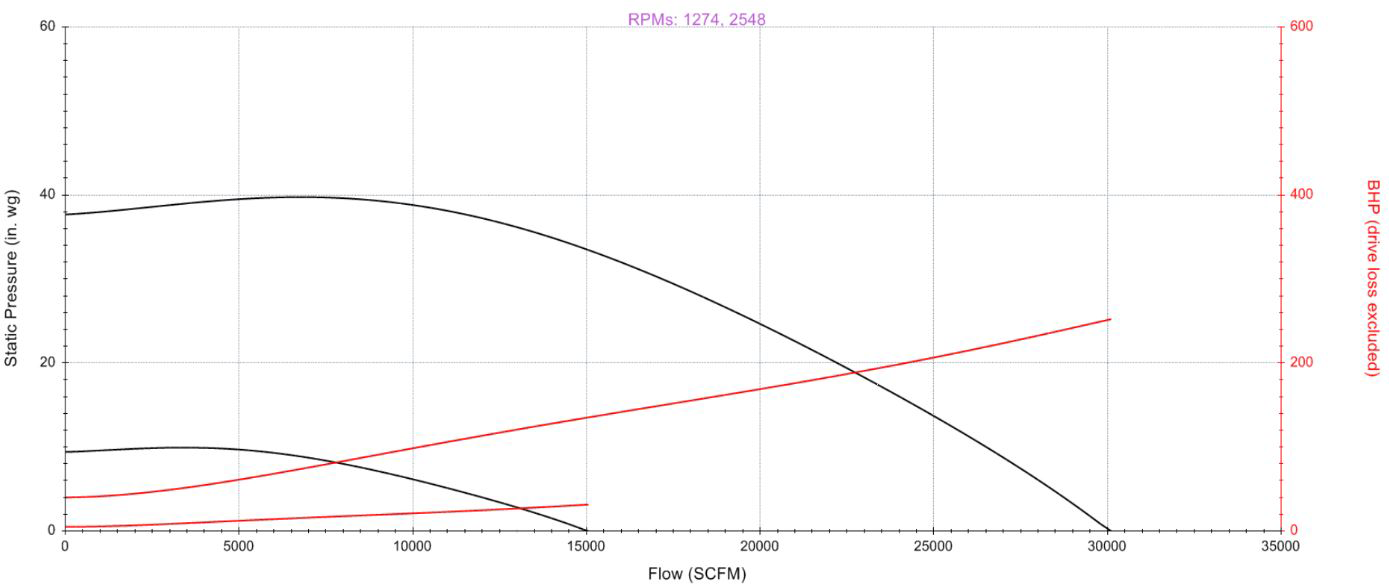An understanding of Basic Fan Laws can keep a field engineer or technician from avoiding a variety of application problems.
| Variable | When Speed Changes | When Density Changes |
|---|---|---|
| VOLUME (CFM1) |
Varies DIRECT with Speed Ratio CFM2=CFM1 (RPM2/RPM1) |
Does Not Change |
| PRESSURE (CFM1) |
Varies with SQUARE of Speed Ratio P2=P1 (RPM2/RPM1)2 |
Varies DIRECT with Speed Ratio P2=P1 (D2/D1) |
| HORSEPOWER (HP1) |
Varies with CUBE of Speed Ratio HP2-HP1 (RPM2/RPM1)3 |
Varies DIRECT with Density Ratio HP2=HP1 (D2/D1) |
For example:
A belt drive fan moves 8,000 CFM at 8.0” wg SP turning 1274 rpm and pulling 17.7 BHP and is fitted with a 25 HP, 1800 RPM motor. Will you be able to double the airflow by doubling the fan speed to 2548 RPM and modifying the fan to accommodate a 50 HP, 1800 RPM motor?
Will this work? No, and we explain as follows…
Referencing the fan volume variable, you can see it is possible to double the CFM to get 16,000 CFM by doubling the fan speed.
However, the fan horsepower variable tells you that the horsepower will increase by the cube of the speed ratio. The speed ratio is 2, so the cube of that ratio becomes 8. So now you need to use a motor that will provide 142 HP (17.7 BHP required by fan at original RPM speed of 1274 X 8 = 142) which, in this case, would require a 150HP / 1800 RPM motor at minimum.
Also, according to fan pressure variable, the static pressure (SP) increases as the square of the speed ratio. In this case, the SP would increase 4 times to 32.0” wg SP.
In this scenario, your fan, ventilation system, and motor controls will probably not accommodate the modification you are trying to accomplish. Below is a multi-speed fan curve showing fan performance of the above example.
Cincinnati Fan Model RBE-19 with Shrouded Radial Wheel (Full Width)
0.075lb./ft.3 Density

By understanding how you can predict fan performance using these basic Fan Laws,you can save yourself a lot of grief and avoid a big, costly mistake.
G Squared is highly experienced in generating and selecting centrifugal fans and curves. We are always available to help with your fan selection needs.


